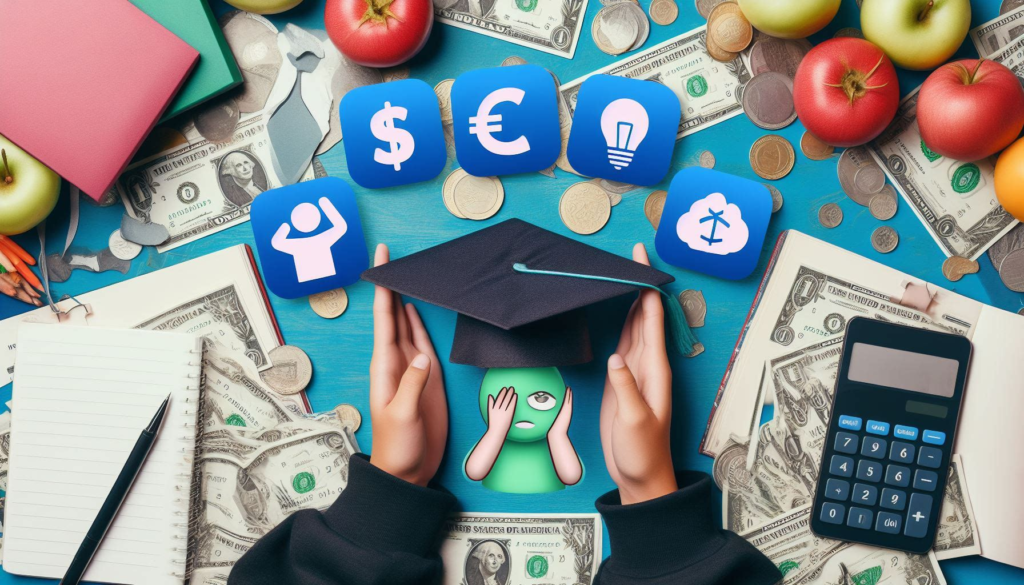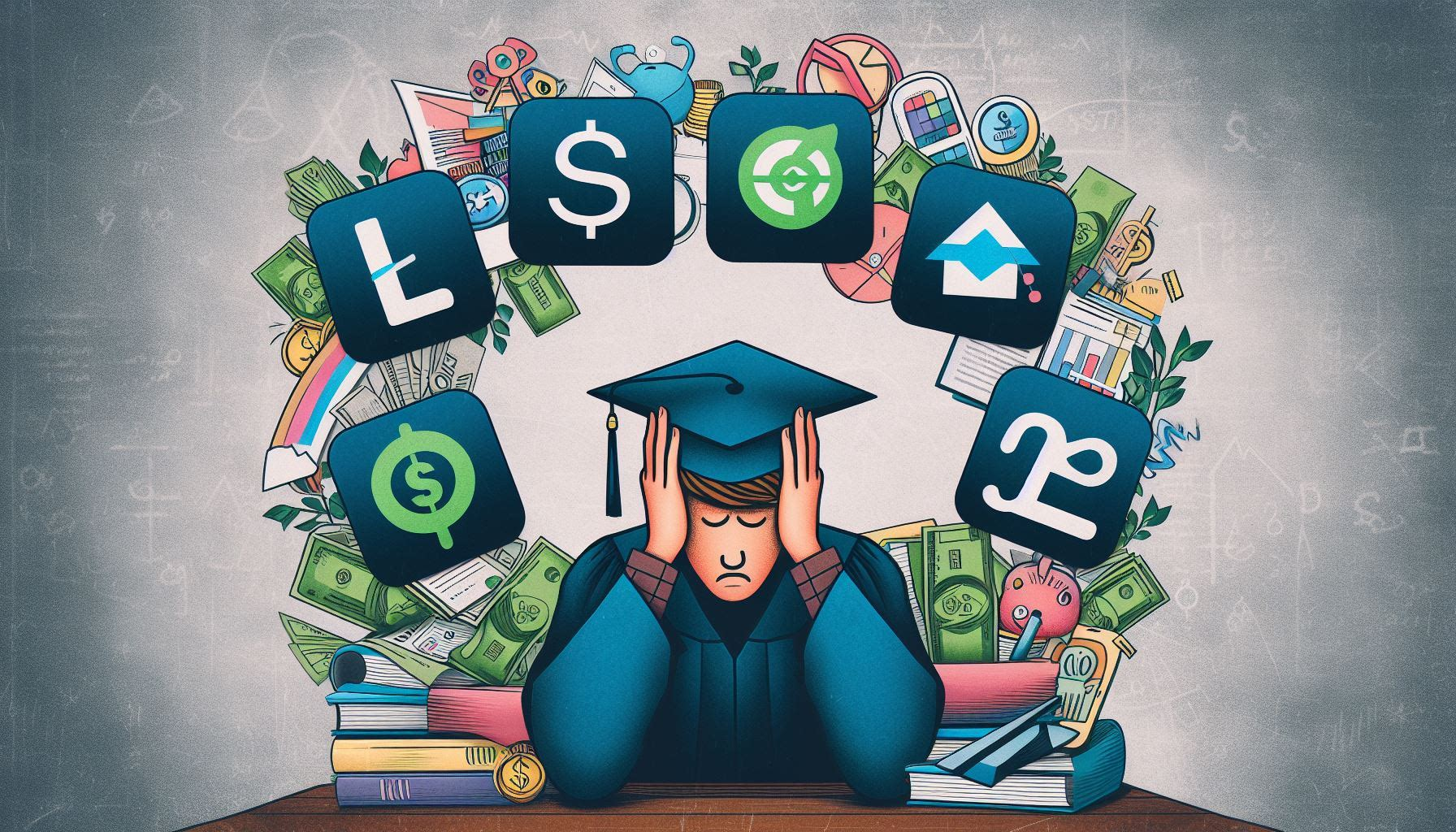College is a time of freedom, new experiences, and for many students, unfortunately, overwhelming debt. Between tuition, textbooks, housing, food, and the occasional night out, it’s easy to feel like your finances are spiraling out of control. But don’t despair! Budgeting apps can be powerful tools for regaining control of your money and setting yourself on a path to financial freedom, even during your busy college years.
5 best budgeting apps for students in 2024
Here are the Top 5 Best Budgeting apps for students.

1: Mint
Mint is one of the most popular budgeting apps for good reason. It connects to your bank accounts and credit cards, automatically categorizing your spending. You get a clear snapshot of where your money goes, can set budgets, and track your progress towards financial goals. Mint is especially great for college students because it’s free and offers helpful tips and insights to improve your financial habits.
A common benefit of Mint is the clear insight it provides into your spending habits. I often see students discover areas where they can save simply through increased awareness.”
2: YNAB (You Need A Budget)
YNAB takes a more proactive approach to budgeting with its zero-based budgeting philosophy. This means giving every dollar a job. The idea is to make conscious spending decisions instead of letting money slip through the cracks. While YNAB has a subscription fee, many students find its structured approach helps them curb impulse spending and make major strides towards financial goals.
If you have student loans and credit card debt lingering after graduation and wants a serious plan to tackle it. then this YNAB’s zero-based budgeting method makes you assign every dollar of income to specific goals. You sees how even small extra payments towards your debt make a big impact over time, keeping you motivated.
3: PocketGuard
PocketGuard simplifies budgeting by asking, “Can I afford it?”. It links to your accounts and analyzes your income and spending patterns, letting you know how much you have left for discretionary spending after essentials. This is a lifesaver for students who tend to overspend without realizing it.
You loves socializing but always ends up broke at the end of the month after too many takeout meals and nights out. PocketGuard’s “Can I afford it?” feature shows you how much money is truly available after bills. It helps you make decisions on the spot, like choosing a night in with friends instead of an expensive bar tab.
4: Goodbudget
Goodbudget uses the virtual envelope budgeting method. You allocate money to different digital “envelopes” (e.g., rent, food, fun). This is a fantastic option for students who like visual budgeting and want to ensure they don’t overspend in specific areas.
If you gets overwhelmed with numbers then You can’t seem to stick to any budget because spreadsheets make you head spin. Goodbudget’s virtual envelopes become your friend. You visualizes your money allocated to rent, food, and your “new shoes” fund. Knowing you are staying within each envelope finally brings your budgeting success.
5: Honeydue
Honeydue is an excellent choice if you’re sharing expenses with a roommate or partner. It allows you to track shared bills, split costs easily, and keep communication open about your finances. This way, money doesn’t become a source of friction in your relationships.
Sharing an apartment with your best friend is great, but splitting utilities, groceries, and the occasional takeout order is causing tension. Honeydue allows you to track shared bills, see who owes what, and send each other money instantly within the app. No more passive-aggressive notes about who hasn’t paid the internet bill yet!

Success Tips
I often encourage students to track every single expense, even the seemingly insignificant ones. This level of detail leads to the greatest self-understanding about spending patterns.
- Be honest: Track all your spending, even the small stuff.
- Set realistic goals: Start small and celebrate wins.
- Automate: Set up bill reminders and auto-transfers to savings.
- It’s a journey: Your budget will change, and that’s okay!
Also Read: The Top Best AI Tools For Content Writing In 2024: Enhancing Your Writing Efforts
Choosing the Right App for You
There’s no single “best” budgeting app for every student. Consider your preferences:
- Budgeting style: Do you want automatic tracking, zero-based planning, or the envelope system?
- Features: Do you need bill reminders, debt payoff tracking, or shared expense management?
- Cost: Are you comfortable with a subscription fee, or do you prefer a free app?
FAQ
1. Are budgeting apps safe?
When choosing a budgeting app, prioritize security. Reputable apps like Mint, YNAB, and others utilize strong encryption and data protection measures similar to those used by banks. Look for clear privacy policies and security features outlined on the app’s website.
2. Can these apps really help me save money?
Budgeting apps are powerful tools, but they’re not magic. They provide a clear picture of your spending, help you set goals, and automate tasks. The real savings come from your commitment to changing your habits and making conscious spending decisions.
3. I have irregular income (part-time work, etc.) – will apps still work for me?
Absolutely! Apps like YNAB are designed with fluctuating incomes in mind. Their focus on proactive budgeting helps you create a plan based on the money you do have, rather than relying on what you think might come in.
4. Free vs. paid apps – what’s the difference?
Free versions of budgeting apps often provide core features like expense tracking, basic budgeting, and insights. Paid versions typically unlock more advanced features like debt payoff tools, investment tracking, in-depth reporting, and personalized financial coaching.
5. I get overwhelmed easily. Which app is the simplest to use?
PocketGuard is a great option for its straightforward approach. Its primary function is showing you how much you have left to spend safely. Mint is also highly beginner-friendly with its automated categorization and intuitive interface.
6. I’m bad with technology. Can I still use a budgeting app?
Definitely! Most popular budgeting apps are designed to be user-friendly, even for those who aren’t tech-savvy. They often provide onboarding tutorials, easy-to-follow guides, and have customer support teams to help you along the way.
7. Do I have to connect my bank account to the app?
Apps like Mint and YNAB derive the most value from connecting to your bank accounts. This automates transaction tracking and provides the most accurate spending picture. However, apps like Goodbudget allow for manual input if you’d prefer not to link your accounts.
8. How often should I check my budgeting app?
For maximum impact, build a habit of regular check-ins. A weekly review of your spending patterns is ideal, along with a quick check on the app before making larger purchases.
9. What if I go over budget sometimes?
Don’t beat yourself up! Budgeting is a learning process. The beauty of these apps is that they help you identify where you tend to overspend, so you can adjust your plan and make better choices in the future. Perfection isn’t the goal, progress is!
10. Can I use a budgeting app even if I don’t have much money?
Absolutely! In fact, it’s even more crucial to be mindful when resources are limited. Budgeting apps help you stretch every dollar, prioritize your spending, and identify areas where you can potentially save.
Conclusion
Remember, budgeting isn’t about restriction. I often see students discover a sense of freedom when using these apps. It allows them to make the most of their college experience while laying the foundation for future financial stability.”

